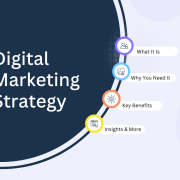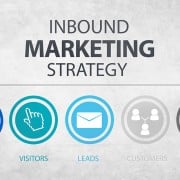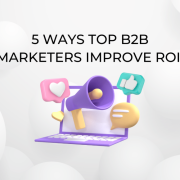Staying Top of Mind – Lead Nurturing Best Practices
As you begin to fill your CRM with leads and opportunities, the need for a solid lead-nurturing strategy becomes more apparent. Allowing “bad timing” or “not-ready” leads to fall by the wayside could result in the loss of future revenue for your business. In this article, we’ll discuss lead nurturing best practices to keep your organization top-of-mind, increase sales, and drive more revenue for your business.
What is lead nurturing?
Lead nurturing engages and attracts your targeted audiences through every stage of their buyer’s journey by offering relevant content that aligns with the prospect’s goals and challenges while bringing awareness to your products and services.
Why do you need it?
Not staying top-of-mind with existing customers and “not-ready” leads is a big mistake many companies make. Too often, prospects and customers are unaware of a company’s full capabilities, or worse, they completely forget about a company and end up doing business elsewhere. Developing an effective lead nurturing strategy to engage with prospects and customers is vital to your business’s success. It will directly impact your inbound marketing strategy, customer retention, and revenue. By continuously reaching out with ways to help your leads succeed and grow, you’ll establish a relationship built on trust, demonstrating that you’re a step above the competition and reinforcing that their success is integral to your own.
Lead Nurturing Best Practices
1. Targeted Content:
Funneling the most qualified leads to your sales team is a critical component to scaling your business. These leads have the lowest churn rate and produce revenue within themselves while promoting your business through word of mouth. But how do you attract these ever-elusive leads? Simply put — targeted content.
Prospects need to know you, like you and trust you before they will buy. Providing relevant content that provides value and helps prospects solve a problem will allow you to truly connect with your leads, keeping you top-of-mind when they’re ready to make a purchase. By offering industry-specific knowledge and information, you will further demonstrate that you know what you’re talking about and build trust with your audience.
For example, if your subscription-based company just announced a new freemium offering, send an email blast to a specific set of leads, announcing the release of this “right now” opportunity. Not all of your contacts would benefit from this subscription type, nor would your sales team. Instead, create lists of “not-ready” leads that didn’t qualify previously due to budget restraints or skepticism, encouraging them to take advantage of your promotion until they have the budget or are sold on the product and go all in.
Depending on their stage in the buyer’s journey, here are some examples of targeted content to engage your audiences:
- Blog posts
- Social media posts
- Video or Vlogs
- Whitepapers
- Checklists
2. Omnichannel Lead Nurturing:
Gone are the days of mind-numbing cold calling and bulk email blasts to gain the interest and attention of your prospects. Today’s audiences are afforded a long list of channels to use for education, entertainment, networking, etc., and it’s up to you to cater to those behaviors and meet them where they are. Fortunately, today’s marketers are equipped with powerful technologies and top marketing automation platforms to create an effective omnichannel experience beyond traditional email marketing tactics.
Try using a combination of the following tactics to deliver an effective multi-channel lead nurturing strategy:
- Email Marketing
- Social Media Platforms
- Retargeting
- Marketing Automation
- Direct Outreach
- Dynamic Website Content
3. Touch-Points and Follow-Ups
B2B research suggests that prospects require eight to ten touch-points before converting into customers. Using the omnichannel approach mentioned above, you can increase engagement with your target audience while achieving the number of touches needed to close a deal. Automating the sales outreach process will streamline your efforts to eliminate unnecessary time crafting emails and checking multiple inboxes from different channels.
Expert Tip: This is a perfect opportunity to link a piece of targeted content to your email that provides industry-specific knowledge or information.
Businesses using marketing automation tools like HubSpot and Salesforce to nurture prospects can see a 451% increase in qualified leads. The need for automation seems quite evident; however, the overuse of automated chat flows and sales workflows could have an adverse effect on your relationship selling process. When a prospect or customer reaches out, a team member should follow up immediately with a phone call, voice mail, or live chat to ensure they connect with an actual person as quickly as possible.
4. High-Quality, Personalized Emails
While there are many components of crafting high-quality emails, providing a personalized experience will increase your chances of the recipient hitting reply. With 4 billion people using email daily, it’s no wonder that businesses whose lead nurturing strategy include personalized campaigns segmented by buyer persona note as much as a 760% increase in revenue.
- Add the contact’s name or company name in the subject line
- Use the contact’s sales rep email in the “From” section
- Apply smart CTA’s to target different lifecycle stages
- Use smart, rich text modules
5. Lead Scoring
According to a recent survey, more than 40% of salespeople say prospecting is the most challenging part of the sales process. And according to the HubSpot Sales Enablement Report, at least 50% of prospects are not a good fit for what you’re selling. So how do we determine which leads we should focus our time on to eliminate some prospecting challenges?
Answer: Lead scoring
If you’re new to the idea, lead scoring is the process of ranking your leads on a scale based on their perceived value in the organization. Lead scoring assigns numerical values to prospect behaviors. The resulting score will define which leads are considered hot and should be contacted immediately or cold and will be nurtured until ready. As part of your sales and marketing alignment process, be sure to have a clearly defined lead definition and a lead scoring process agreed upon and approved by both teams. Once the lead behavioral criteria are defined, begin assigning scores to email subscriptions, web page views, form submissions, conversions, or social media engagement. The higher the score, the more qualified the lead and the increased chances of closing the deal.
Leveraging Lead Nurturing Best Practices
Incorporate one or all of these lead-nurturing best practices into your sales strategy to begin actively engaging with your target audience. Your customers will be delighted by your attention to detail, persistence, and willingness to help while your organization stays top-of-mind, increases sales, and drives more revenue.
If you’d like to learn more about developing an effective lead nurturing strategy or have questions about inbound marketing, contact us for additional information or access free resources.
Ready to generate more qualified leads, boost conversions, and increase sales for your business? Download our free lead generation acceleration guide — 10 Steps to Increase Lead Generation and get started!











